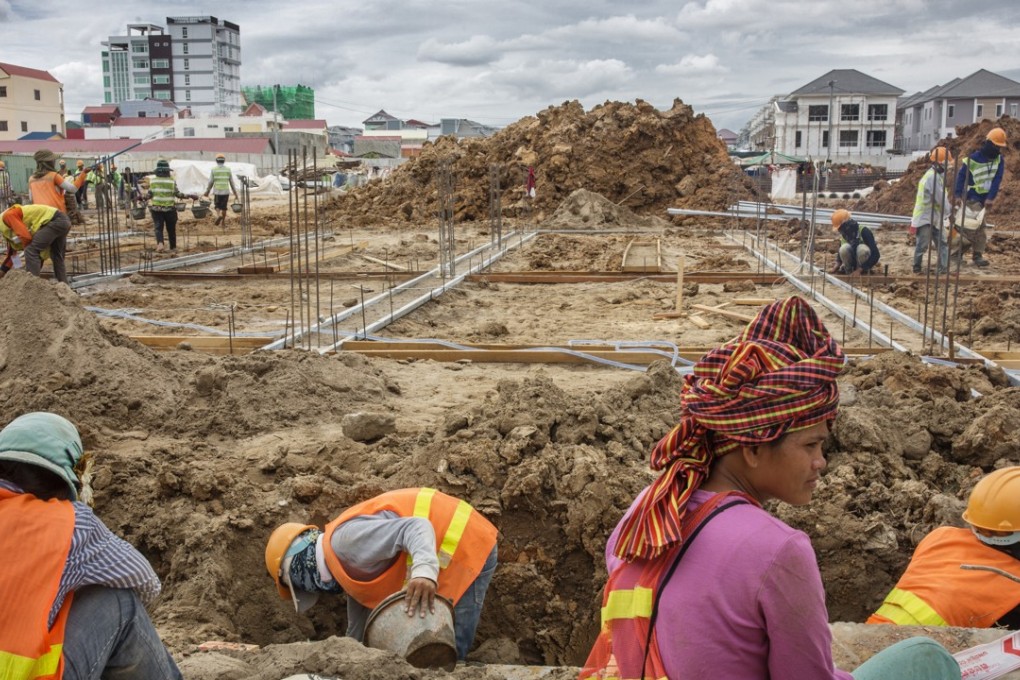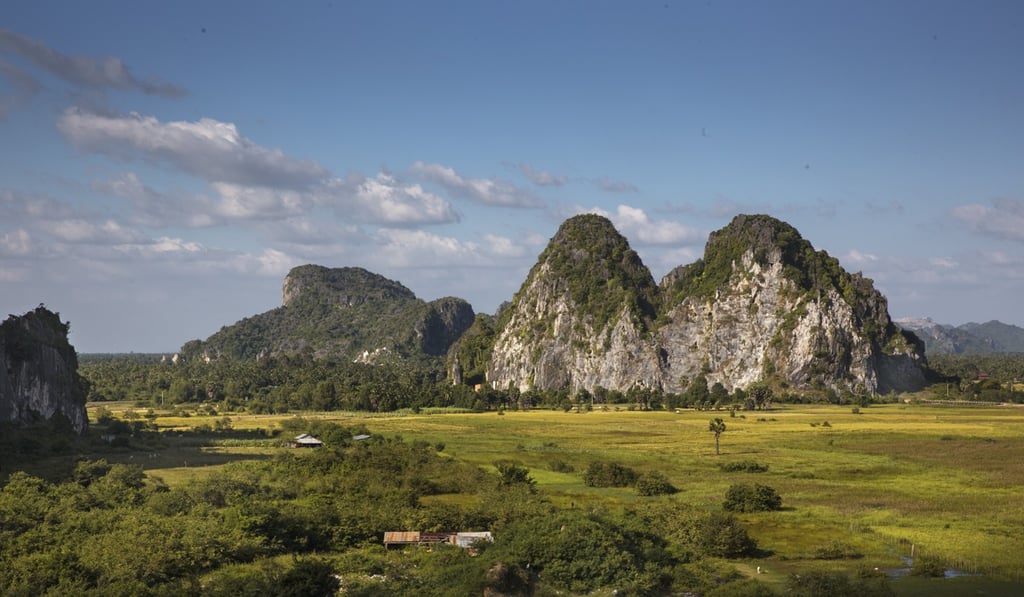Asian demand for cement destroys stunning cliffs in Cambodia – pulverised for their limestone
Across the continent, a construction boom is driving record demand for a core constituent of cement – limestone – resulting in the utter destruction of unique and fragile ecosystems

Phnom Kampong Trach, a karst mountain in southern Cambodia’s Kampot province, close to the border with Vietnam, towers over rice paddies and pepper plantations like a slumbering dragon. Local people have a long and intimate relationship with the massive limestone outcrop and its numerous caves. This is where they collect guano – bat droppings – to fertilise their crops. This is where their spirits live. And in times of war, this is where they have taken shelter from bombs and destruction.
To enter the massive landmark’s gloomy interior, we clamber through a cavity that Ken Sam An, director of the local forestry and eco-tourism association, tells us is called “the dragon’s neck”. Over millions of years, water has dissolved and sculpted the limestone here – the remains of an ancient coral reef – into otherworldly shapes. Ken Sam An names them in turn (“the elephant’s tongue”; “the mushroom god”; “the white diamond elephant”).
We pass a monk chanting by a shrine and climb the 100 or so steps to a natural balcony. A cowbell chimes gently from below. Then, suddenly, an explosion sends a shudder through the rock and Ken Sam An points out a cliff, perhaps a dozen kilometres away, that has been torn in half.
Is Hong Kong’s third runway using ethically sourced sand?
“It breaks my heart,” he says. “If they continue blowing up the hills at this rate, they will all soon be gone.”
The reason for the environmental destruction is the need for concrete, the essential ingredient of urban development.

Asia as a whole, in fact, is currently spending more on construction than all of Europe and the United States combined, and Cambodia is in overdrive. Foreign demand for property has spurred construction mania, and leading real estate consultancy Knight Frank expects the number of condominiums across the country to triple in the coming two years.